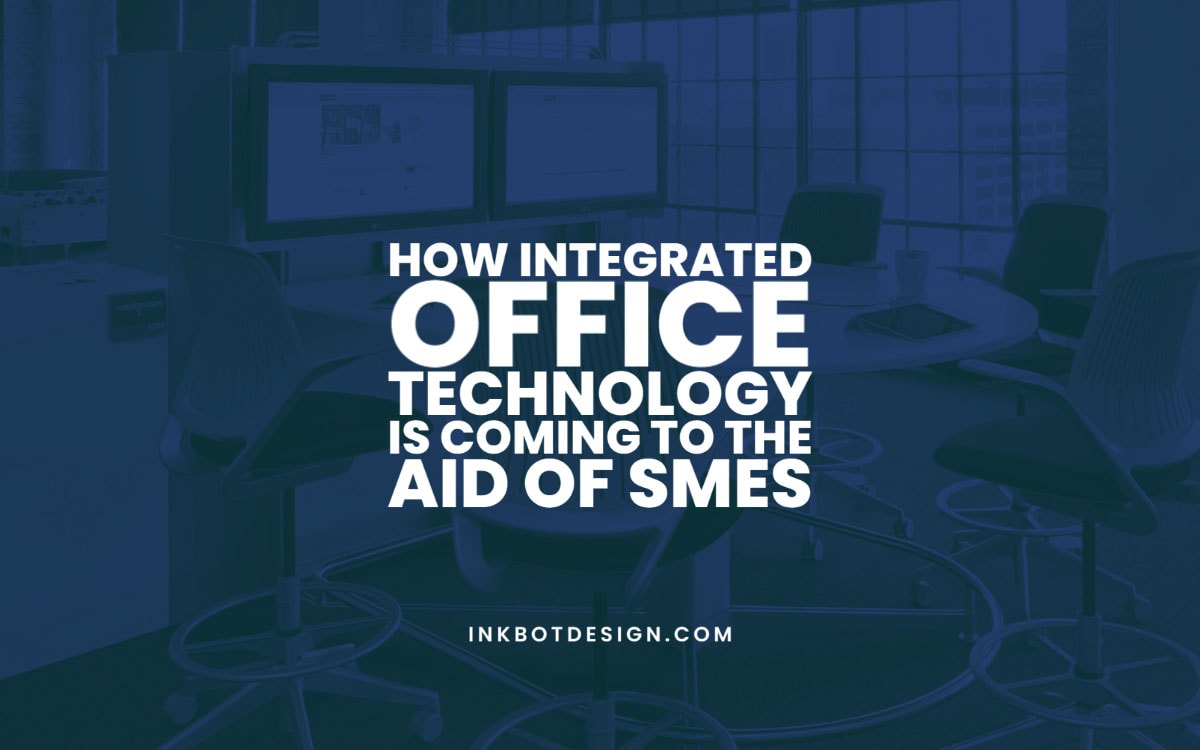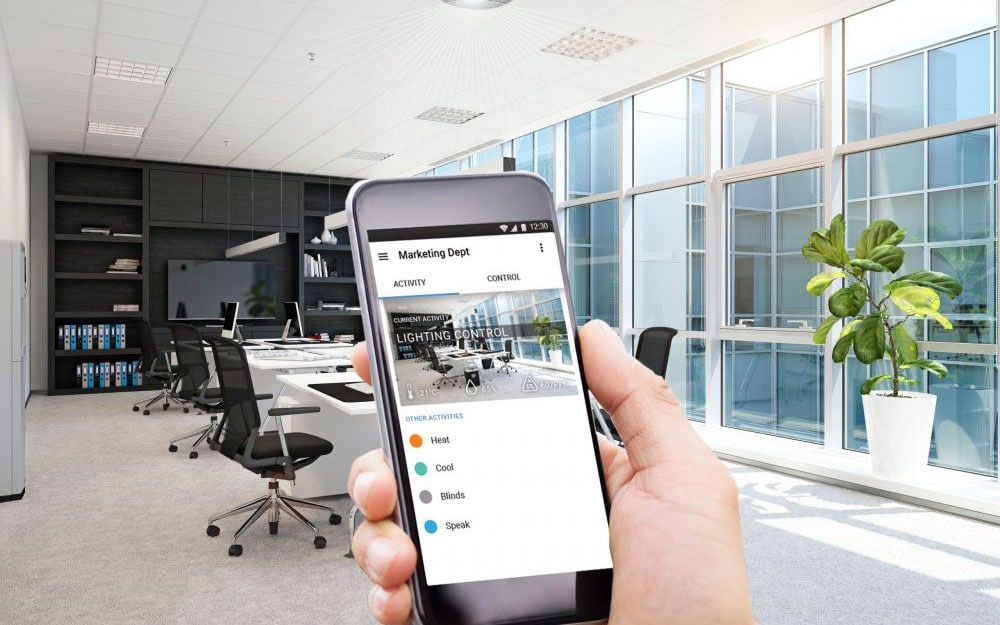
22 Apr How Integrated Office Technology is Coming to the Aid of SMEs
How Integrated Office Technology is Coming to the Aid of SMEs
Many recent articles have focused upon the relationship between the digital domain and modern business trends. Of course, there is certainly nothing wrong with this observation.
A growing number of firms are now fully leveraging the power of the Internet to cater to a much wider target audience.
It is nonetheless important to remember that in-house solutions are just as important. This is when the notion of integrated office technology will come into play.
We are not only referring to well-known concepts such as the Internet of Things (IoT) in this respect.
On the contrary, the role of e-commerce systems is now being augmented by back-office technology to provide an even greater sense of efficiency.
Before we look at the benefits of this approach, it is first wise to briefly define what it entails and how these frameworks can relate to businesses in the 21st century.
A Quick Definition of Integrated Systems
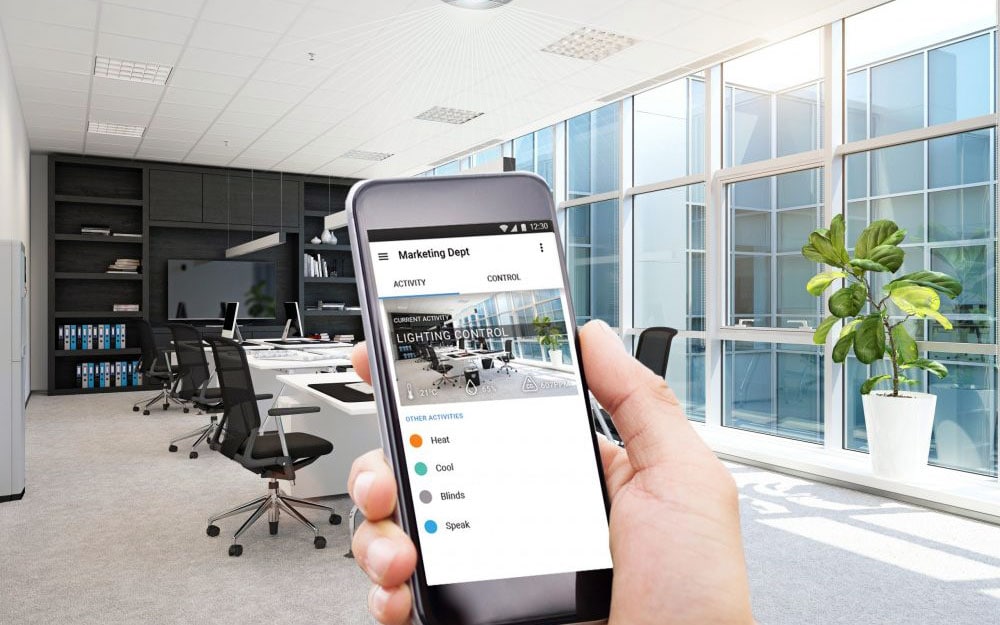
This system seeks to fully integrate online e-commerce platforms with in-house accounts and similar IT databases from an extremely fundamental perspective.
This essentially signifies that any existing CRM platform will be much more efficient than being utilised as solely a standalone platform.
Integrated office technology aims to achieve precisely what the title entails.
Namely, it will be engineered to meet the needs of the organisation in question.
Not only can this result in greater levels of in-house efficiency, but (perhaps most importantly) clients will remain satisfied.
This is the reason why such approaches are just as relevant when referring to seemingly disparate industries such as dentistry as they are when discussing their impact upon the SME sector (the primary focus of this article).
Now that we have obtained a general overview of how these systems function, it is essential to appreciate why they have become so popular by examining some of their most profound benefits.
Instantaneous Access to Data
Recent studies suggest that most SMEs will store their data within cloud-based services by 2023.
Retrieving this type of information is vital to endure streamlined ongoing operations.
The potential issue with legacy systems is that the methods used to obtain this data are often obtuse and inefficient.
Integrated solutions provide targeted approaches to access this very same information, mainly when speaking of big data.
To put it simply, companies will be able to interpret essential metrics including (better but not limited to):
- Recent sales statistics
- Future industry forecasts
- The most popular products and services within their niche market
- Customer demographics
This is a much more beneficial strategy for any firm which seeks to remain one step ahead of the digital curve.
Enhanced Communications
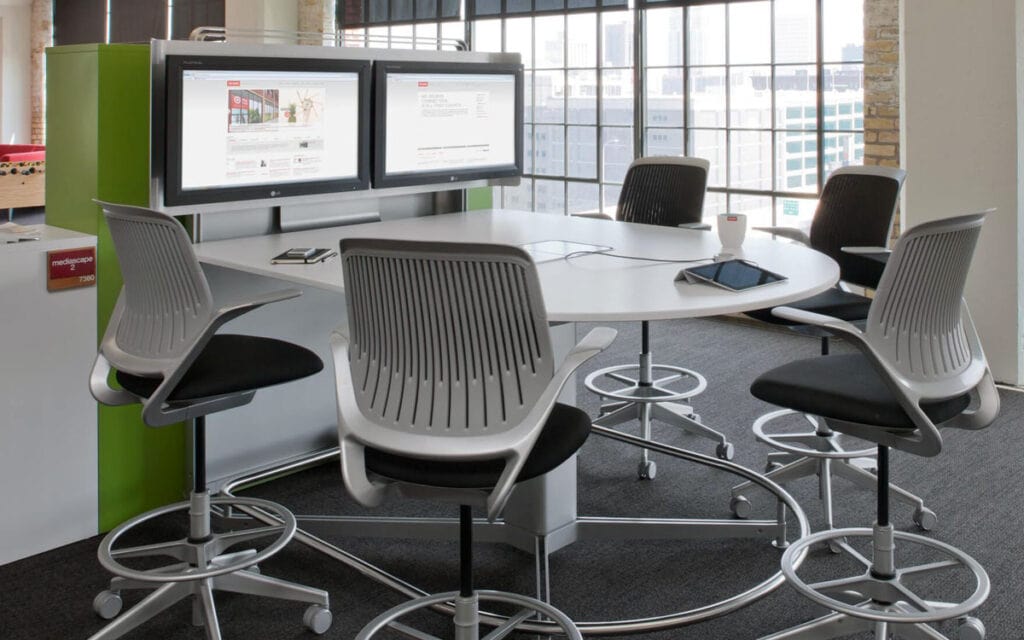
Any well-oiled office will require an efficient communications network.
While this is a foregone conclusion, it is essential to mention that methods have certainly changed in recent times.
These environments new rely heavily upon digital services to create clear interdepartmental communication channels (as well as to contact new and existing customers).
Integrated office technology helps to streamline these requirements.
The good news about this type of integration is that it is scalable in nature. Stated, the hardware and software can be adapted depending upon the needs of the location in question.
As a result, levels of in-house efficiency will be vastly enhanced.
Whether referring to electronic gadgets such as wall-mounted LED screens designed for virtual seminars or VoIP systems, clear and concise communications should never be taken for granted.
Greater Levels of Cross-Channel Accountability
It makes sense to discuss this topic in greater detail, considering the subject of the prior section.
Why is accountability so important? Here are some of the real benefits associated with accountability:
- An increased capacity to carry out vital tasks.
- Enhanced workplace morale.
- Fewer chances of making costly mistakes.
- Greater managerial oversight.
The next question, therefore, involves how integrated technology can boost accountability.
The main reason involves the simple fact that clear communication channels will provide a greater level of top-down insight.
An integrated approach will save both time and effort, from explaining the requirements associated with an upcoming project to ongoing training sessions and task delegation.
Reduced Operational Costs

Time is money in the world of business. Therefore, it is perfectly logical to assume that every organisation wants to keep its operational costs as low as possible.
Once again, integrated technological systems will often come into play. This mainly comes in the form of reduced overhead expenditures.
However, some offices are nonetheless still hesitant to adopt such an integrated approach.
One common reason involves the belief that such systems will require a significant investment.
Although this may be true (depending upon the types of required solutions), the long-term advantages regarding ROI far outweigh any initial fiscal commitment.
Innovative and Modern Office Technology
In terms of innovative office technology, we are referring to the physical, operational environment.
Modern offices need to be equipped with the latest amenities to enhance the internal process.
This point has already been made. However, it is just as important to remember that employee productivity will also depend upon their comfort levels.
A harmonious office outfitted with the latest integrated solutions will always be associated with a better work ethic, enhanced levels of employee satisfaction and lower rates of absenteeism.
Furthermore, workers who feel that their personal needs are being catered to will inevitably perform at a higher level.
Managers need to take these metrics quite seriously, as they can often spell the difference between success and stagnation.
Targeted Customer Support Solutions
We should also mention that integrated office solutions will have impacts far beyond the environment itself.
Increased levels of in-house efficiency and targeted communication solutions will translate to the overall customer experience.
Clients who feel that their desires are addressed in a timely fashion are much more likely to remain loyal over time.
Here are some examples which illustrate how integration can influence current customer support concerns:
- Automated answering services.
- The ability to route a request to a specific department.
- More streamlined tracking and shipping techniques.
- Real-time monitoring solutions in terms of sales.
- Clear communications with the use of dedicated VoIP systems.
Troubleshooting is another point to mention before moving on.
Let us imagine for a moment that a database becomes corrupted, or the point-of-sale page within a website crashes.
In the past, simply diagnosing the exact problem would require time and a great deal of effort.
Thanks to integrated solutions, all team members can be immediately aware of any fault that may exist.
Thus, you will adopt a more collaborative approach to restore functionality as soon as possible.
The result is that customer backlogs and can avoid similar issues, enhancing end-user satisfaction.
Affordable Integration Options
The majority of businesses need to monitor their budgetary expenses carefully.
This is particularly relevant in these modern times due to the global health crisis.
Research has shown that 23 per cent of all businesses have been forced to reduce their budgets during the past 12 months.
So, it stands to reason that mitigating the impacts of office-related operational costs is an excellent strategy to embrace.
Integrated solutions will help to provide this financial “breathing room”.
In this sense, we refer to the ability to pick and choose which systems are the most relevant.
This was not always the case in the past. Previous technologies were generally associated with a one-size-fits-all approach.
Businesses had relatively few options, and as a result, many were presented with entirely irrelevant (or redundant) hardware and software packages.
Times have certainly changed. It is now possible for managers to develop bespoke integrated solutions based solely on their organisation’s needs.
This dramatically reduces the amount of technological “fluff” found within the office.
Highly integrated environments can therefore enjoy a much greater degree of flexibility. If a business is required to upsize (or downsize), you can adopt solutions quickly.
It is important to stress the decidedly “evergreen” nature of integrated office technology on a final note.
While it is indeed true that the current COVID-19 pandemic has dramatically impacted the business community, it is also a fact that this very same sense of integration has been occurring for a long time.
It will likewise continue well into the future. It is also likely that even more affordable solutions will be made available as technology continues to evolve.
Accelerated Levels of Growth
Stagnation is one of the most concerning situations for any business. This is often caused by utilising outdated legacy solutions when addressing specific tasks.
Low levels of integration will always correlate with equally dismal levels of productivity.
This inevitably results in curtailed growth rates in terms of profits, product development and customer acquisitions.
Here are some of the reasons why integrated solutions will help to accelerate growth:
- Data can be easily collated, stored and accessed when needed.
- Employees can share information when addressing large projects.
- Feedback can be obtained instantaneously when needed.
- Stakeholders can scrutinise existing approaches to determine if you could streamline them for optimal performance.
SMEs should be particularly concerned about growth, as there is little room for error in this day and age.
Leveraging an integrated approach will help to ensure that the right efforts are focused on the right directions at the correct times.
Employee Retention
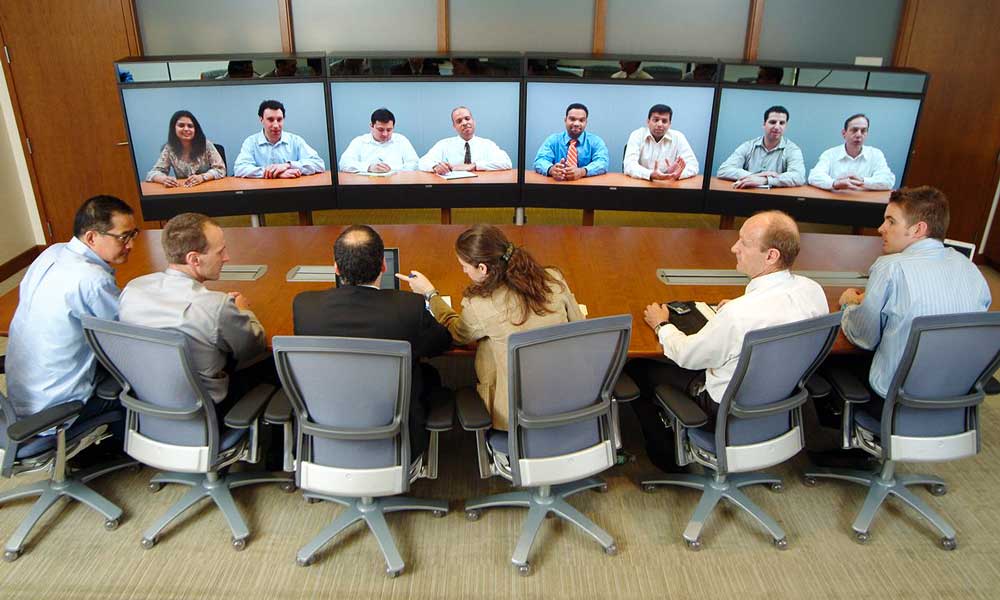
The following observation can be overlooked on occasion, and yet, it is just as important.
We need to keep in mind that HR departments will also rely upon technological integration to address the needs of employees.
Those who can address any concerns as they arise are much more likely to come to an amenable solution for the worker in question.
As a result, integrated office technology will also help to increase employee retention over time.
Not only does this create a more productive work environment, but we should mention that seasoned workers are much more capable of performing required tasks without requiring additional training or oversight.
Thus, you can keep the costs associated with new employee acquisitions to a minimum.
Millennials are particularly keen to work within a highly functional and integrated office.
As this demographic represents the future workforce, it is perfectly logical that you should adopt such solutions sooner than later.
Cutting-Edge Office Apps
There are dozens of software applications related to providing integrated office solutions. Some of the most popular include:
- Salesforce
- Hubspot
- Zoho CRM
- Pipedrive
- Google Drive
While each of these is slightly different in terms of architecture, they all share the same intention.
They have been designed to provide employees with integrated and collaborative tools to bolster in-house productivity.
Whether referring to creating a new digital marketing campaign, analysing the latest sales figures, or monitoring a specific employee’s performance, the presence of these applications is critical.
Another massive benefit that can be attributed to modern office applications is that they can work in conjunction with third-party software and operating systems.
This digitally agnostic approach helps to ensure that minimal (if any) downtime will be required when migrating to a new platform.
Integrated Office Solutions: The Way Forward
It is now clear to see that there are numerous reasons why an integrated approach is necessary for today’s business landscape.
Not only will these approaches provide numerous in-house benefits, but they offer longitudinal solutions to guarantee an impressive return on investment.
Small- to medium-sized businesses should therefore carefully examine their current and future requirements.
Managers can then make the most informed decisions when the time is right. The notion of integrated office technology is here to stay.
Remaining slightly ahead of the curve will inevitably equate to a bright digital future.
Author Bio: Paul Towler is the Technical Operations Director at Smart Office, a software automation provider who has helped many SMEs install and use these solutions. As a result, these businesses have saved time and money and increased productivity.
